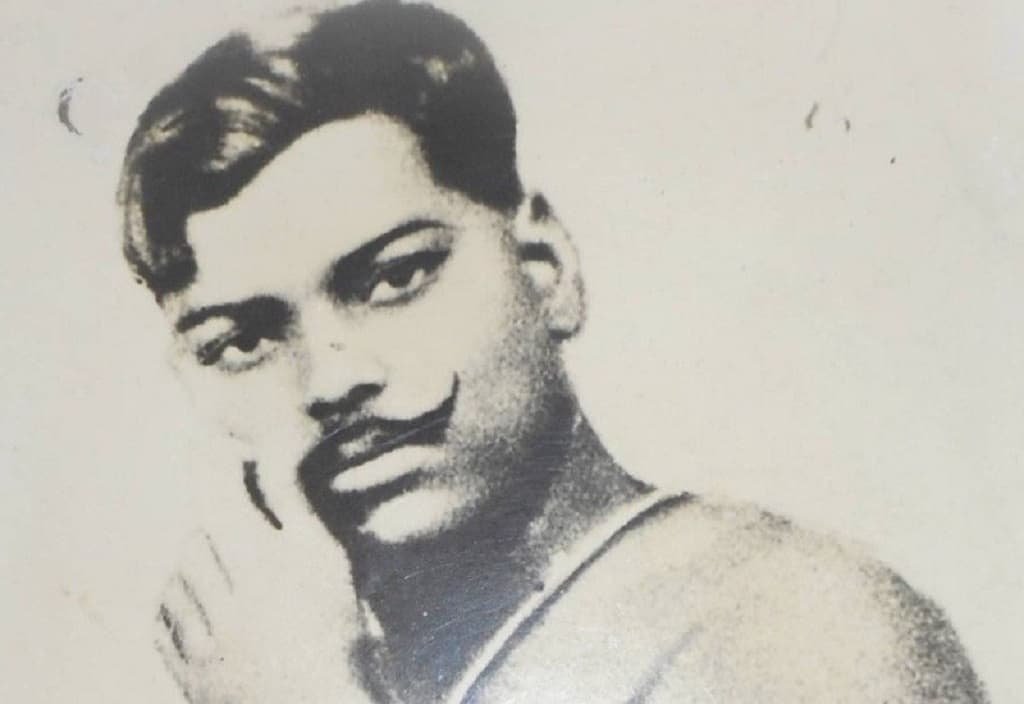Chandra Shekhar Azad death was a severe blow to the Indian freedom struggle, and his sacrifice continues to inspire generations of Indians.
Chandra Shekhar Azad was a well-known Indian revolutionary and freedom fighter who was instrumental in India’s war for independence from British colonial authority. Azad’s death marks a watershed moment in India’s liberation movement.
His organization’s center was Jhansi for a while. He coached his other gang members in shooting techniques in the forest of Orchha, which is 15 kilometers (9.3 miles) from Jhansi. He was a skilled marksman.
Also Read: Adam Scott Has Two Kids Frankie Graham Scott, Wife Naomi And Net Worth
Following Ram Prasad Bismil, its creator, and three other key Party leaders, Roshan Singh, Rajendra Nath Lahiri, and Ashfaqulla Khan, the Hindustan Socialist Republican Association (HSRA) were formed by Chandra Shekhar Tiwari.
Chandra Shekhar Azad Death: How Did Freedom Fighter Die?
On February 27, 1931, the CID chief of Police in Allahabad, J. R. H. Nott-Bower, was informed by someone that Azad was at Alfred Park, having a conversation with his friend and assistant Sukhdev Raj.
When he received it, Bower requested that the Allahabad Police accompany him to the park to arrest him. Veerbhadra Tiwari and Yashpal, Azad’s former colleagues, were also held accountable for tipping off two Police constables.

The cops arrived and encircled the area on all four sides. The gunfight began when some constables and DSP Thakur Vishweshwar Singh approached the park armed with weapons.
Also Read: Aubrey Plaza And Matthew Gray Gubler Relationship: Are They Dating?
Azad requested Raj leave so he could carry on his heritage and work in the Party; Azad provided cover Fire, and Raj left safely. Azad ducked behind a tree to protect himself and began firing from there.
The cops retaliated. Following a protracted gunfight, he shot himself in the head with the last bullet in his gun, keeping true to his commitment to always be Azad (Free) and never be caught alive. During the shooting, Bower and DSP Singh were shot in the right palm and jaw.
Once the other Police officers came, the Police recovered Azad’s corpse. Even after discovering Azad’s death, they were unwilling to approach him.
The corpse was cremated at Rasulabad Ghat without telling the general population. When word spread, people flocked to the park where the tragedy occurred. They screamed anti-British Raj slogans and lauded Azad.
Was Chandra Shekhar Married? Family Explored
On July 23, 1906, Chandra Shekhar Azad was born, as Chandra Shekhar Tiwari, to a Brahmin family in the princely state of Alirajpur. His ancestors were from Badarka village in Uttar Pradesh’s Unnao district.
His mother, Jagrani Devi, was Sitaram Tiwari’s third wife, all of whom died while he was young. The family relocated to Alirajpur State after the birth of their first son, Sukhdev, in Badarka.

His mother wished for her son to become a brilliant Sanskrit scholar and convinced his Father to send him to study at Kashi Vidyapeeth in Banaras.
Chandra Shekhar, a 15-year-old student, joined the Non-Cooperation Movement at its peak in 1921. As a consequence, on December 20, he was detained.
On being shown before the Parsi district magistrate Judge M. P. Khareghat a week later, he stated his name as “Azad” (The Free), his Father’s name as “Swatantrata” (Freedom) and his address as “Jail.” The enraged magistrate sentenced him to 15 lashes.
Chandra Shekhar Revolutionary Life Explored
Azad grew dissatisfied after Mahatma Gandhi suspended the non-cooperation movement in 1922.
He met Manmath Nath Gupta, a young revolutionary who introduced him to Ram Prasad Bismil, the founder of the Hindustan Republican Association (HRA), a revolutionary group.
He subsequently became an active member of the HRA and began to raise cash for the organization. The majority of the funds were obtained through robberies of government property.
He took part in the Kakori Train Robbery in 1925, the shooting of John P. Saunders in Lahore in 1928 to avenge the death of Lala Lajpat Rai, and the attempt to blow up the Viceroy of India’s train in 1929.
Azad was allowed to read the Communist Manifesto by his comrade Shiv Verma.
While Azad was the revolutionary Party’s commander-in-chief, he frequently borrowed a book called ABC of Communism from writer Satyabhakta to teach socialism to his cadres. Although a member of Congress, Motilal Nehru supported Azad frequently.

